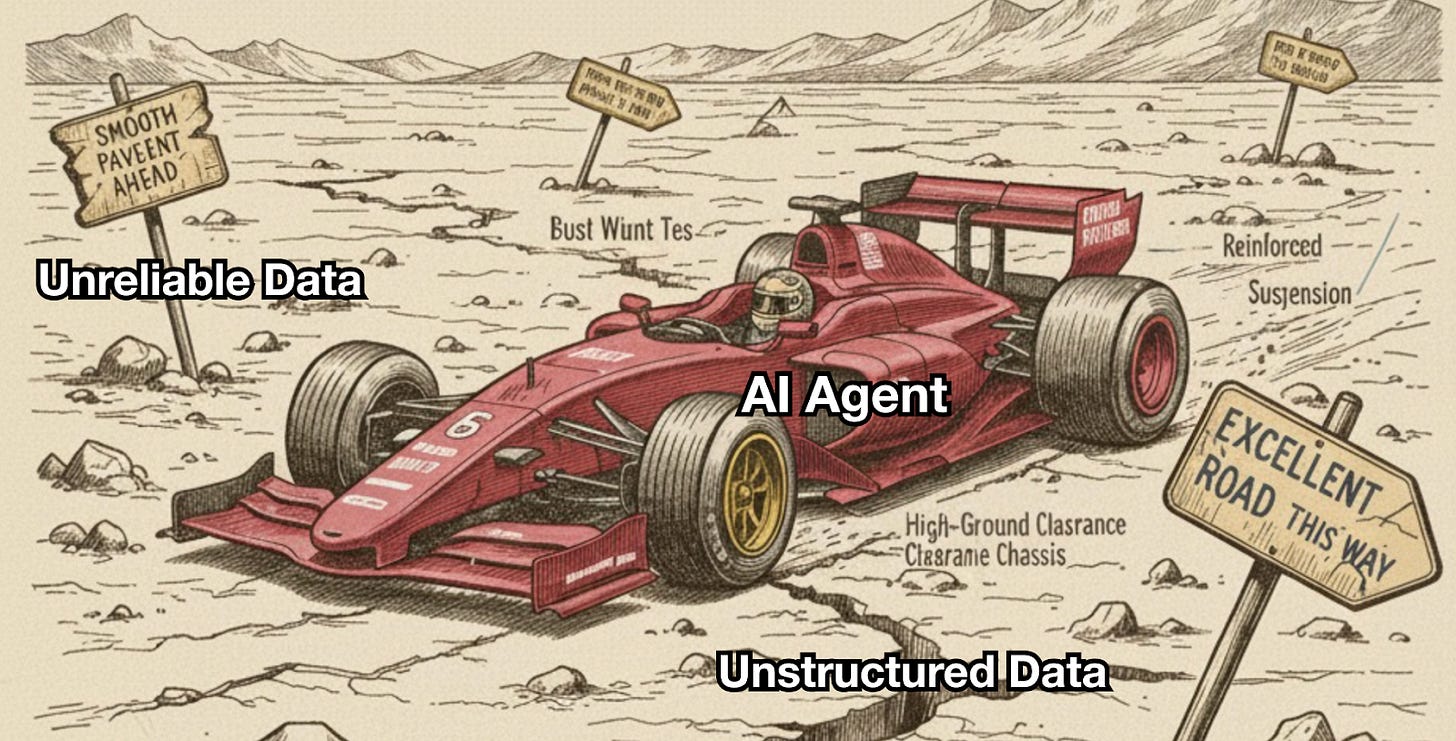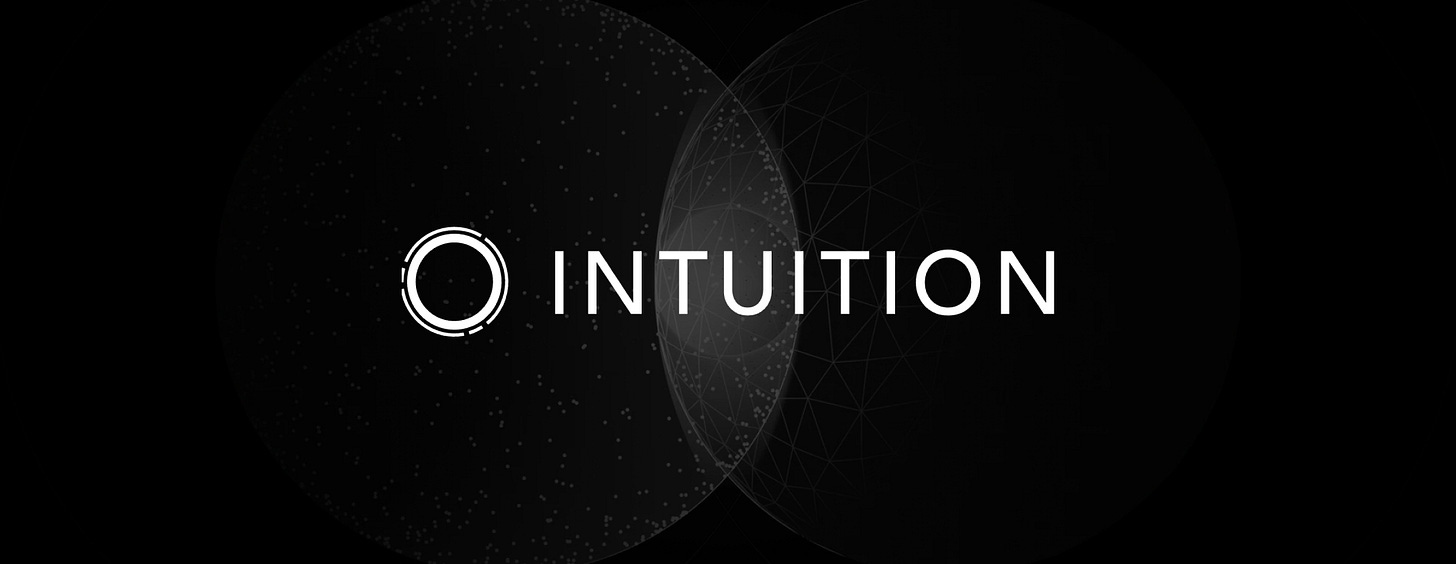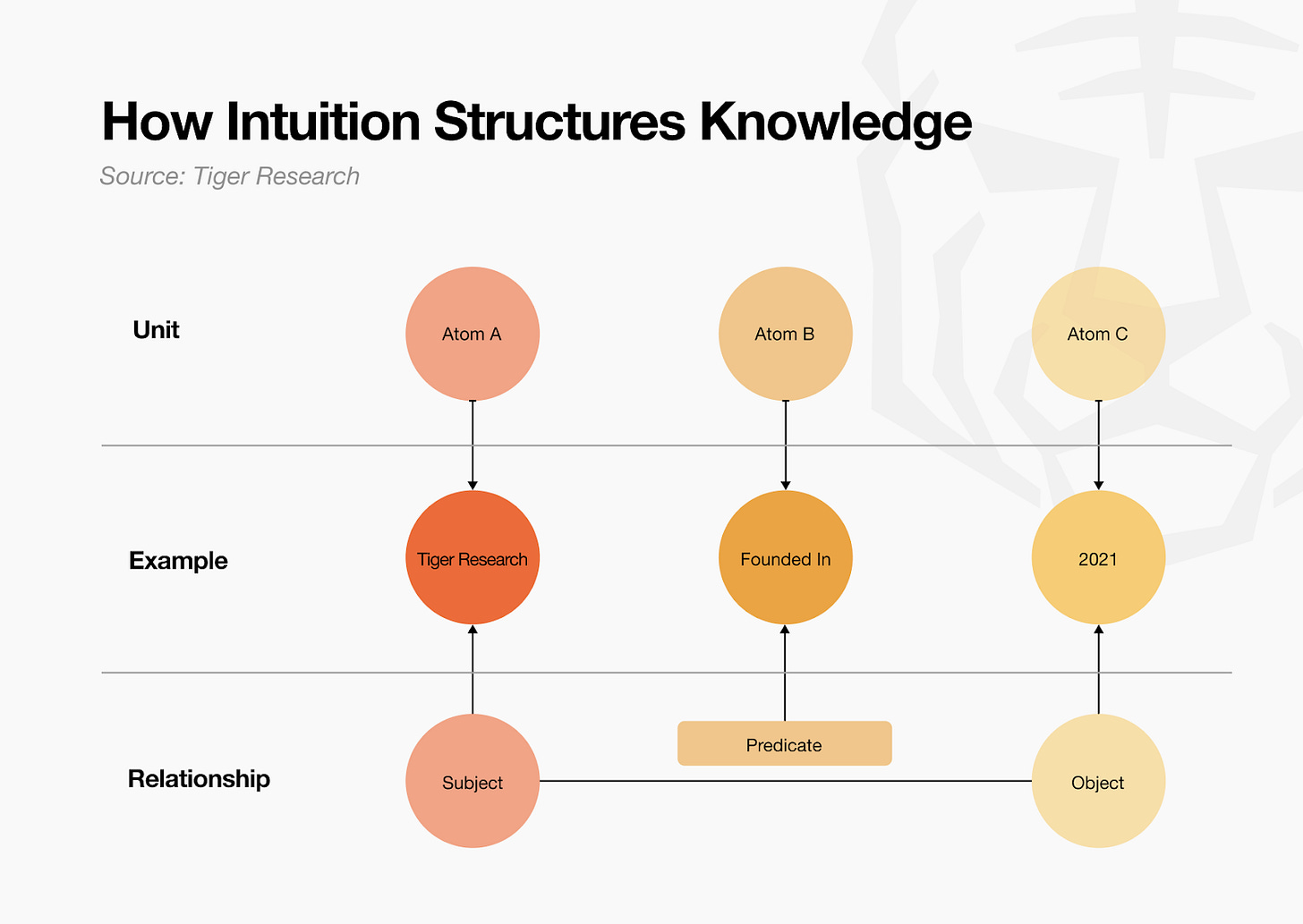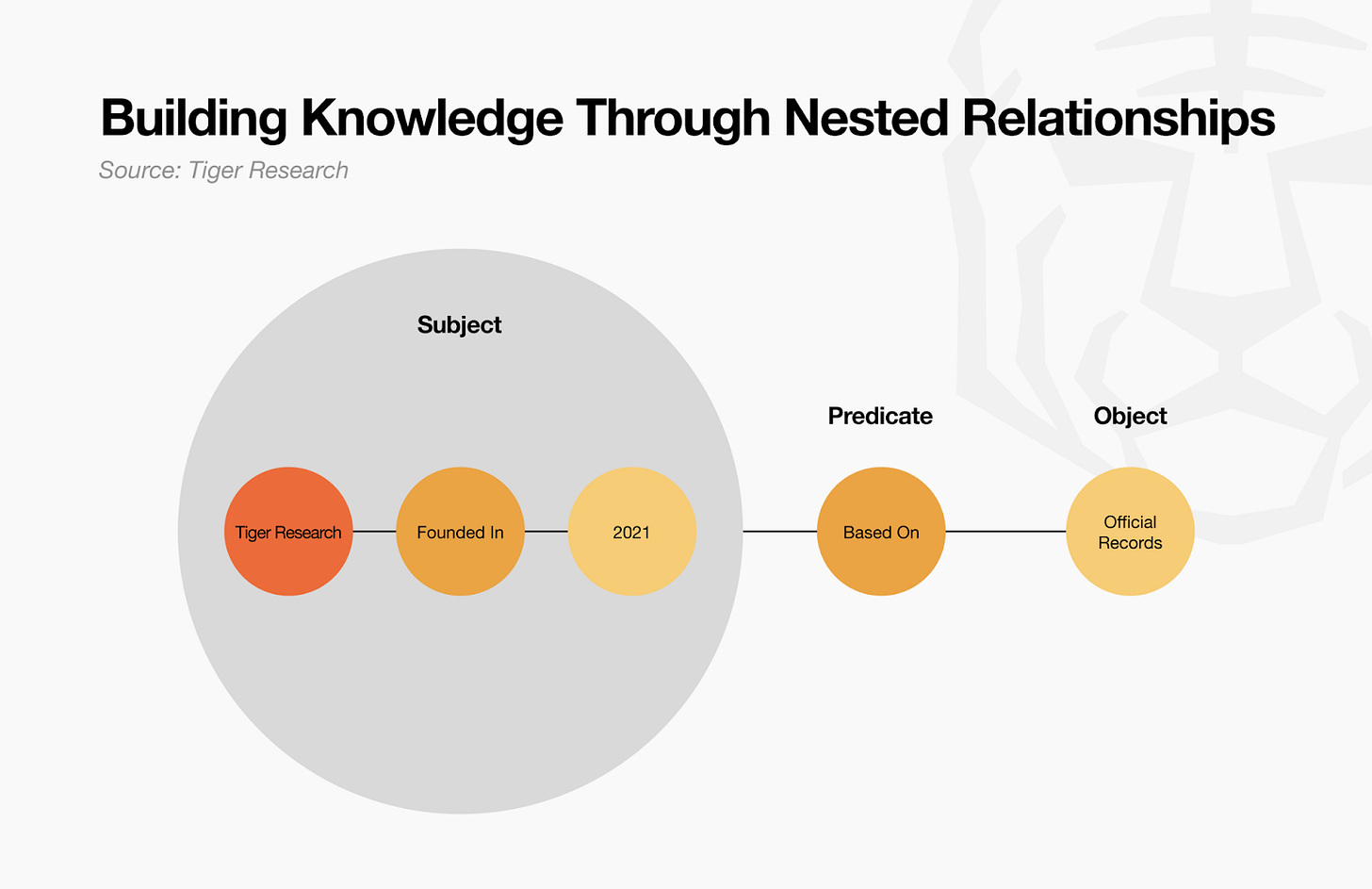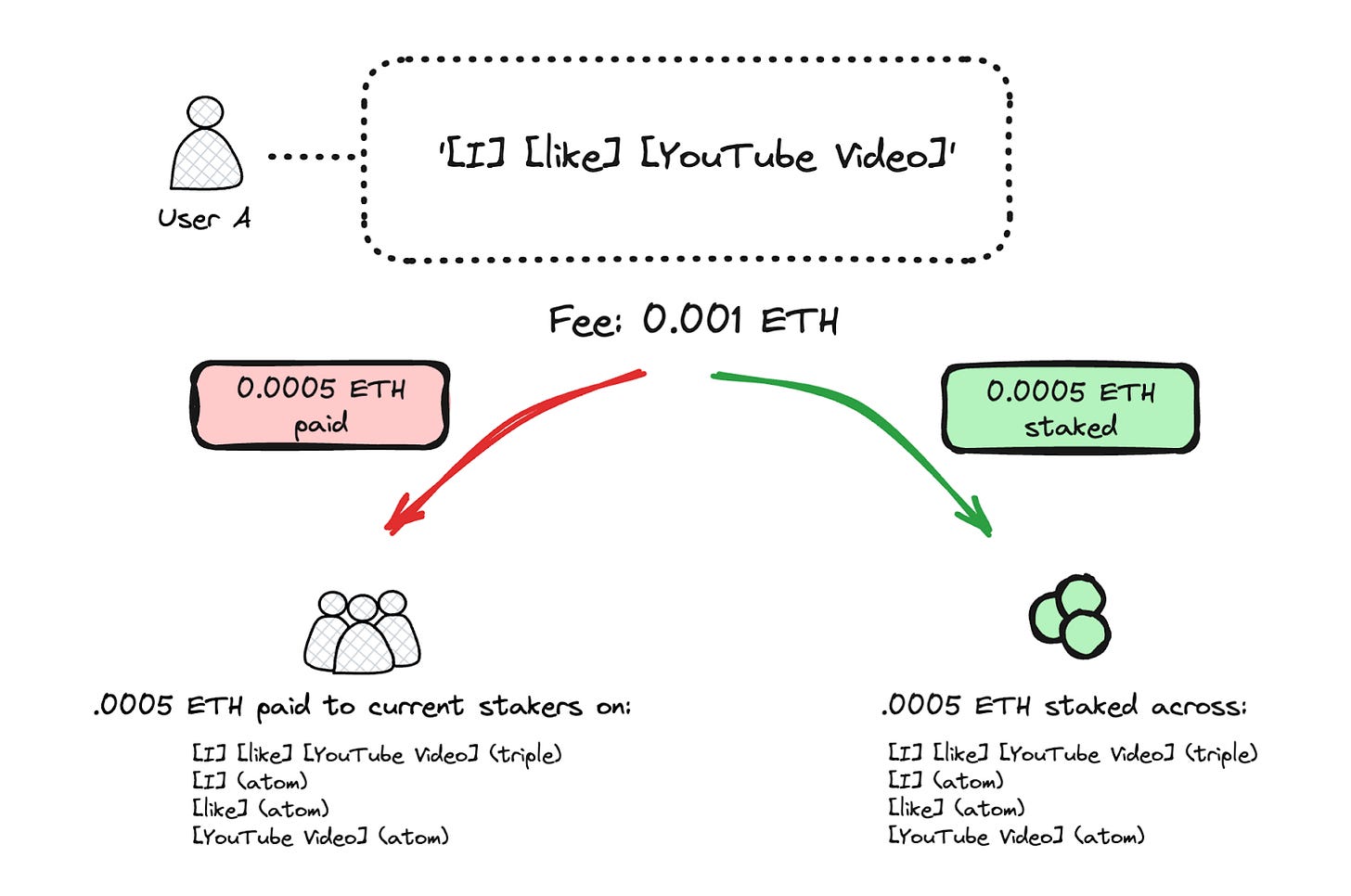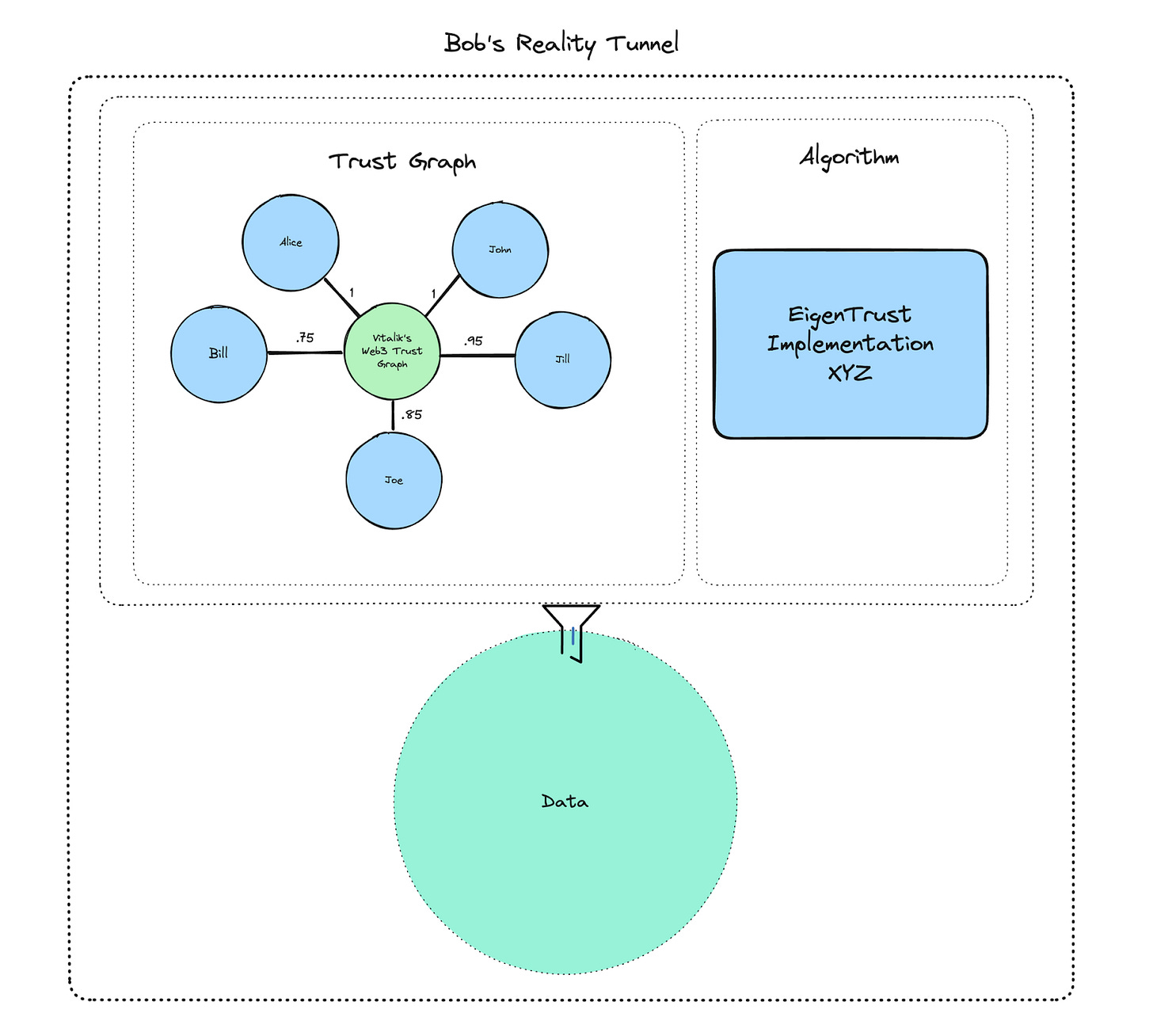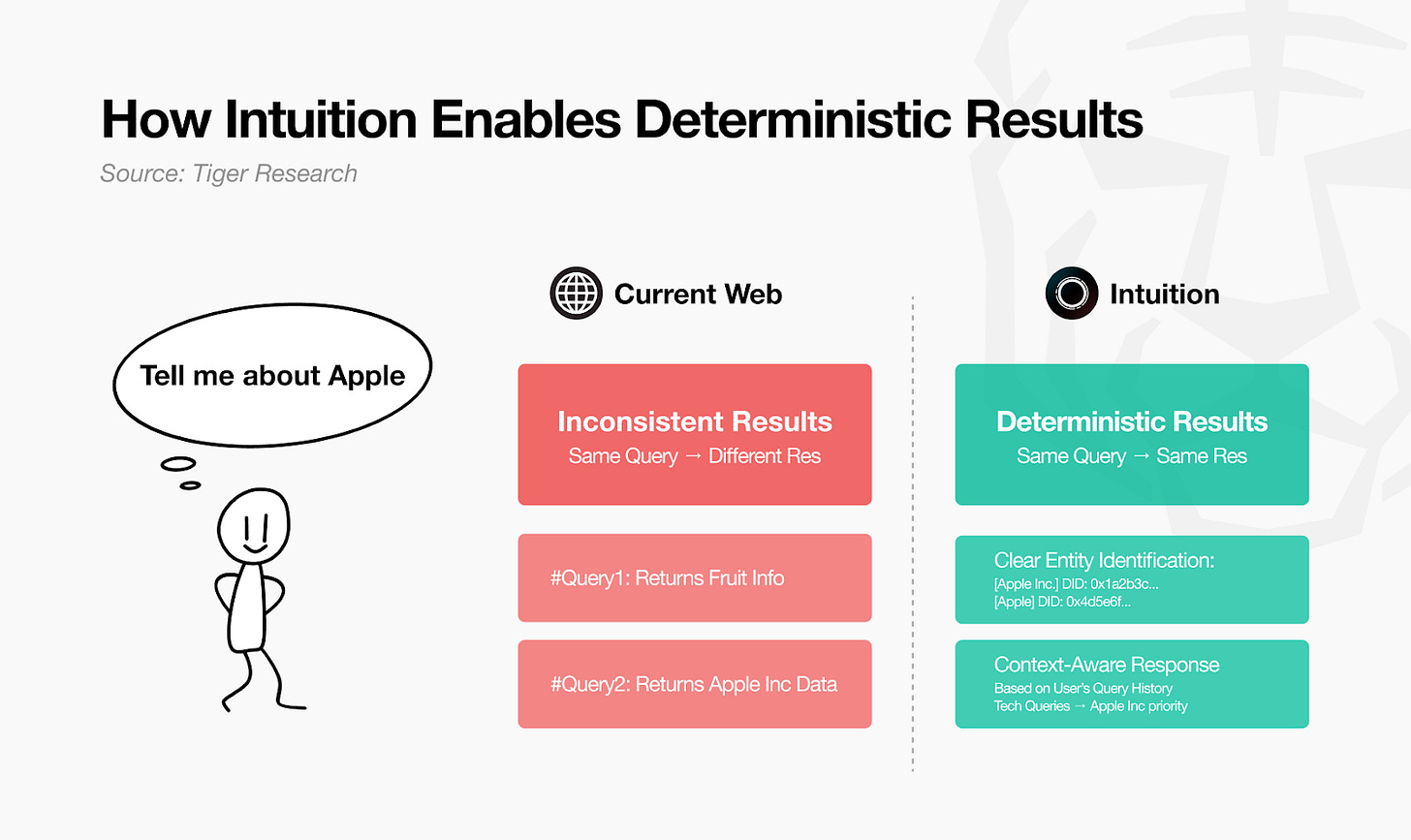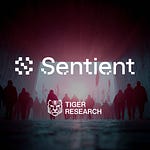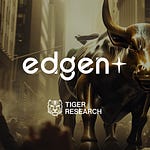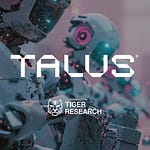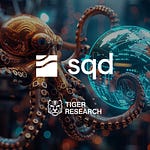This report was written by Tiger Research, analyzing Intuition's approach to rebuilding web infrastructure for the agentic AI era through atom-based knowledge structuring, token-curated registries for standard consensus, and signal-based trust measurement systems.
TL;DR
The agentic AI era has arrived. AI agents cannot perform to their full potential. Current web infrastructure targets humans. Websites use different data formats. Information remains unverified. This makes it hard for agents to understand and process data.
Intuition evolves the Semantic Web's vision through Web3 approaches. It addresses existing limitations. The system structures knowledge into Atoms. It uses Token Curated Registries (TCR) to reach consensus on data usage. Signal determines how much to trust that data.
Intuition will transform the web. Current web resembles unpaved roads. Intuition creates highways where agents can operate safely. It will become the new infrastructure standard. This realizes the true potential of the agentic AI era.
1. The Agent Era Begins: Is the Web Infra Enough?
The era of agentic AI is gaining momentum. We can imagine a future where personal agents handle everything from travel planning to complex financial management. But in practice, things are not so simple. The issue is not with AI performance itself. The real limitation lies in today’s web infrastructure.
The web was built for humans to read and interpret through browsers. As a result, it is poorly suited for agents that need to parse semantics and connect relationships across data sources. These limitations are obvious in everyday services. An airline website may list a departure time as “14:30,” while a hotel site shows check-in as “2:30 PM.” Humans immediately understand both as the same time, but agents interpret them as entirely different data formats.
The issue goes beyond formatting differences. A critical challenge is whether agents can trust the data itself. Humans can work with incomplete information by relying on context and prior experience. Agents, by contrast, lack clear standards for assessing provenance or reliability. This leaves them vulnerable to false inputs, flawed conclusions, and even hallucinations.
In the end, even the most advanced agents cannot thrive in such conditions. They are like F1 cars: no matter how powerful, they cannot reach full speed on an unpaved road—unstructured data. And if misleading signs—unreliable data—are scattered along the route, they may never reach the finish line.
2. Web’s Technical Debt: Rebuilding the Foundation
This issue was first raised more than 20 years ago by Tim Berners-Lee, the creator of the World Wide Web, through his proposal for the Semantic Web.
The Semantic Web's core idea is simple: structure web information so machines can understand it, not just as human-readable text. For example, "Tiger Research was founded in 2021" is clear to humans but appears as mere character strings to machines. The Semantic Web structures this as "Tiger Research (subject) – founded (predicate) – 2021 (object)" so machines can interpret the meaning.
This approach was ahead of its time but ultimately never came to be. The biggest reason was implementation challenges. Reaching consensus on data formats and usage standards proved difficult, and more importantly, building and maintaining vast datasets through voluntary user contributions was nearly impossible. Contributors received no direct rewards or benefits. Additionally, the question of whether the created data could be trusted remained an unsolved problem.
Nevertheless, the Semantic Web's vision remains valid. The principle that machines should understand and utilize data at the semantic level hasn't changed. In the AI era, this need has become even more critical.
3. Intuition: Reviving the Semantic Web in a Web3 Way
Intuition evolves the Semantic Web's vision through Web3 approaches to address existing limitations. The core lies in creating a system that incentivizes users to voluntarily participate in accumulating and verifying quality structured data. This systematically builds knowledge graphs that are machine-readable, have clear provenance, and are verifiable. Ultimately, this provides the foundation for intelligent agents to operate reliably and brings us closer to the future we envision.
3.1. Atoms: Building blocks of Knowledge
Intuition starts by dividing all knowledge into minimal units called Atoms. Atoms represent concepts like people, dates, organizations, or attributes. Each has a unique identifier(using tech like Decentralized Identifiers, or DIDs) and exists independently. Every Atom records contributor information so you can verify who added what information and when.
The reason for breaking knowledge into Atoms is clear. Information typically comes in complex sentences. Machines like agents have structural limitations in parsing and understanding such composite information on their own. They also struggle to determine which parts are accurate and which are incorrect.
Subject: Tiger Research
Predicate: founded In
Object: 2021
Consider the sentence "Tiger Research was founded in 2021." This could be true, or only parts might be wrong. Whether this organization actually exists, whether "founding date" is an appropriate attribute, and whether 2021 is correct each require individual verification. But treating the entire sentence as one unit makes it hard to distinguish which elements are accurate and which are false. Tracking the source of each piece of information becomes complex too.
Atoms solve this problem. Define each as independent Atoms like [Tiger Research], [founded In], [2021], and you can record sources and verify each element individually.
Subject: Tiger Research's founding date is 2021
Predicate: Based On
Object: Official Records
Atoms are not just tools for dividing information - they work like Lego blocks that can be combined. For example, the individual Atoms [Tiger Research], [Founded In], and [2021] connect to form a Triple. This creates meaningful information: "Tiger Research was founded in 2021." This follows the same structure as Triples in the Semantic Web's RDF (Resource Description Framework).
These Triples can also become Atoms themselves. The Triple "Tiger Research was founded in 2021" can expand into a new Triple like "Tiger Research's founding date of 2021 is based on business records." Through this method, Atoms and Triples combine repeatedly, evolving from small units into larger structures.
The result is that Intuition builds fractal knowledge graphs that can expand infinitely from basic elements. Even complex knowledge can be broken down for verification and then recombined.
3.2. Token Curated Registries: Market-Driven Consensus
If Intuition provides a conceptual framework for structuring knowledge through Atoms, three key questions now remain: Who will contribute to creating these Atoms? Which Atoms can be trusted? And when different Atoms compete to represent the same concept, which one becomes the standard?
Intuition solves this problem through Token Curated Registries (TCRs). TCRs filter entries based on what the community values. Token staking reflects these judgments. Users stake $TRUST, Intuition's native token, when they propose new Atoms, Triples, or data structures. Other participants stake tokens on the supporting side if they find the proposal useful, or on the opposing side if they don't. They can also stake on competing alternatives. Users earn rewards if their chosen data gets used frequently or receives high ratings. They lose part of their stake if not.
TCRs verify individual attestations, but they also solve the ontology standardization problem effectively. Ontology standardization means deciding which approach becomes the common standard when multiple ways exist to express the same concept. Distributed systems face the challenge of reaching this consensus without centralized coordination.
Consider two competing predicates for product reviews: [hasReview] and [customerFeedback]. If [hasReview] gets introduced first and many users build on it, early contributors own token stakes in that success. Meanwhile, [customerFeedback] supporters gain economic incentives to gradually switch to the more widely adopted standard.
This mechanism mirrors how the ERC-20 token standard gained natural adoption. Developers who adopted ERC-20 got clear compatibility benefits - direct integration with existing wallets, exchanges, and dApps. These advantages naturally drew developers to ERC-20. This showed that market-driven choices alone can solve standardization problems in distributed environments. TCRs work on similar principles. They reduce agents' struggles with fragmented data formats and provide an environment where information can be understood and processed more consistently.
3.3. Signal: Building Trust-Based Knowledge Networks
Intuition structures knowledge through Atoms and Triples and uses incentives to reach consensus on "what actually gets used."
One last challenge remains: How much can we trust that information? Intuition introduces Signal to fill this gap. Signal expresses user trust or distrust toward specific Atoms or Triples. It goes beyond simply recording that data exists - it captures how much support the data receives in different contexts. Signal systematizes the social verification process we use in real life, like when we judge information based on "a reliable person recommended this" or "experts verified it."
Signal accumulates in three ways. First, explicit signal involves intentional evaluations users make, like token staking. Second, implicit signal emerges naturally from usage patterns like repeated queries or applications. Finally, transitive signal creates relational effects - when someone I trust supports information, I tend to trust it more too. These three combine to create a knowledge network showing who trusts what, how much, and in what way.
Intuition provides this through Reality Tunnels. Reality Tunnels offer personalized perspectives for viewing data. Users can configure tunnels that prioritize expert group evaluations, value close friends' opinions, or reflect specific community wisdom. Users can choose trusted tunnels or switch between multiple tunnels for comparison. Agents can also use specific interpretive approaches for particular purposes. For example, selecting a tunnel that reflects Vitalik Buterin's trusted network would set an agent to interpret information and make decisions from "Vitalik's perspective."
All signals get recorded on-chain. Users can transparently verify why specific information seems trustworthy, which addresses serve as sources, who vouches for it, and how many tokens are staked. This transparent trust formation process lets users verify evidence directly rather than blindly accepting information. Agents can also use this foundation to make judgments that fit individual contexts and perspectives.
4. What If Intuition Becomes Next Web Infra?
Intuition's infrastructure is not just a conceptual idea but a practical solution that addresses problems agents face in today's web environment.
The current web is filled with fragmented data and unverified information. Intuition transforms data into deterministic knowledge graphs that give clear, consistent results to any query. Token-based signals and curation processes verify this data. Agents can make clear decisions without relying on guesswork. This simultaneously improves accuracy, speed, and efficiency.
Intuition also provides the foundation for agent collaboration. Standardized data structures let different agents understand and communicate information the same way. Just as ERC-20 created token compatibility, Intuition's knowledge graphs create an environment where agents can cooperate based on consistent data.
Intuition goes beyond agent-only infrastructure to function as a foundational layer all digital services can share. It can replace trust systems that each platform currently builds individually - Amazon's reviews, Uber's ratings, LinkedIn's recommendations - with one unified foundation. Just as HTTP provides common communication standards for the web, Intuition provides standard protocols for data structure and trust verification.
The most important change is data portability. Users directly own the data they create and can use it anywhere. Data isolated in individual platforms will connect and reshape the entire digital ecosystem.
5. Rebuilding the Foundation for the Coming Agentic Era
Intuition's goal is not simple technical improvement. It aims to overcome the technical debt accumulated over the past 20 years and fundamentally redesign web infrastructure. When the Semantic Web was first proposed, the vision was clear. But it lacked incentives to drive participation. Even if their vision had been realized, the benefits remained unclear.
The situation has changed. AI advances are making the agentic era a reality. AI agents now go beyond simple tools. They perform complex tasks on our behalf. They make autonomous decisions. They collaborate with other agents. These agents need fundamental innovation in existing web infrastructure to operate effectively.
As Balaji, former CTO of Coinbase, points out, we need to build proper infrastructure for these agents to operate. The current web resembles unpaved roads rather than highways where agents can move safely on trustworthy data. Each website has different structures and formats. Information is unreliable. Data remains unstructured and agents struggle to understand it. This creates major barriers for agents to perform accurate and efficient work.
Intuition seeks to rebuild the web to meet these demands. It aims to build standardized data structures that agents can easily understand and use. It wants reliable information verification systems. It needs protocols that enable smooth interaction between agents. This resembles how HTTP and HTML created web standards in the early internet days. It represents an attempt to establish new standards for the agentic era.
Challenges remain, of course. The system cannot function properly without sufficient participation and network effects. Critical mass requires considerable time and effort. Overcoming the inertia of existing web ecosystems is never easy. Establishing new standards presents difficulties. But this is a challenge that must be solved. Intuition's proposed rebase will overcome these challenges. It will open new possibilities for the agentic era that is just beginning to be imagined.
🐯 More from Tiger Research
Read more reports related to this research.Disclaimer
This report was partially funded by Intuition. It was independently produced by our researchers using credible sources. The findings, recommendations, and opinions are based on information available at publication time and may change without notice. We disclaim liability for any losses from using this report or its contents and do not warrant its accuracy or completeness. The information may differ from others' views. This report is for informational purposes only and is not legal, business, investment, or tax advice. References to securities or digital assets are for illustration only, not investment advice or offers. This material is not intended for investors.
Terms of Usage
Tiger Research allows the fair use of its reports. ‘Fair use’ is a principle that broadly permits the use of specific content for public interest purposes, as long as it doesn't harm the commercial value of the material. If the use aligns with the purpose of fair use, the reports can be utilized without prior permission. However, when citing Tiger Research's reports, it is mandatory to 1) clearly state 'Tiger Research' as the source, 2) include the Tiger Research logo following brand guideline. If the material is to be restructured and published, separate negotiations are required. Unauthorized use of the reports may result in legal action.


